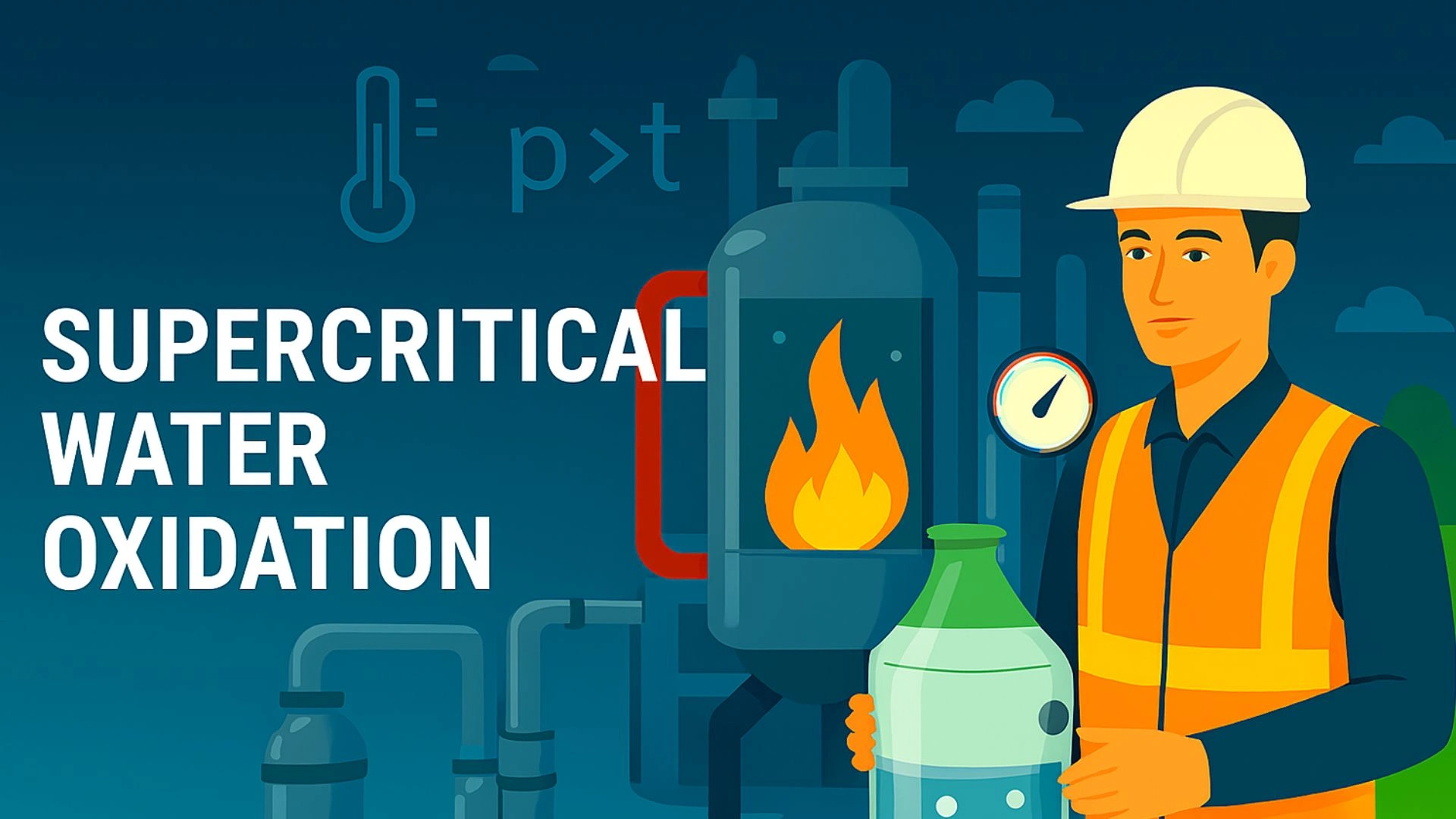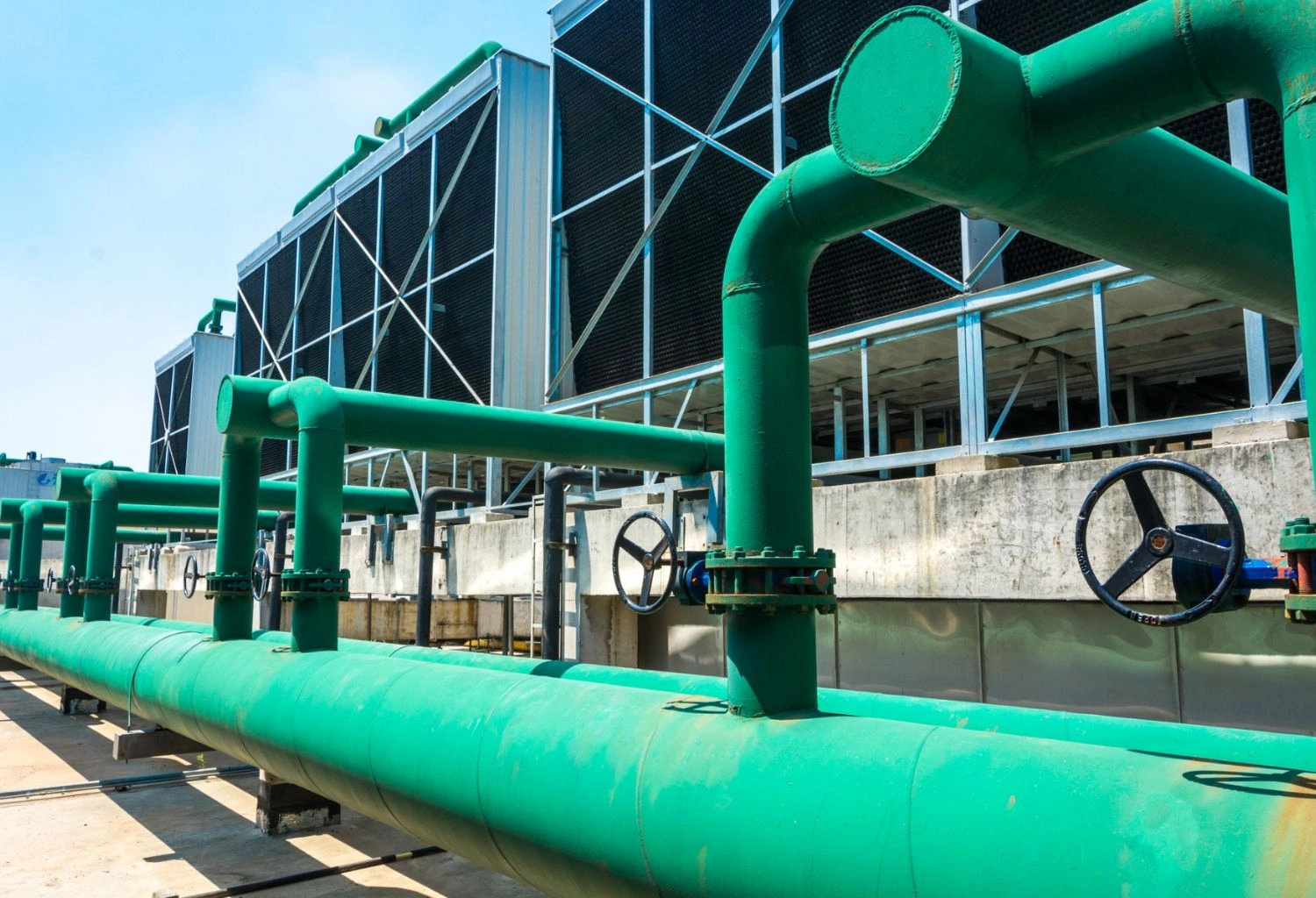How can we safely and efficiently treat hazardous organic compounds that are otherwise resistant to conventional wastewater treatment methods? The answer lies in Supercritical Water Oxidation (SCWO)—a groundbreaking technology that is transforming hazardous waste management and organic waste treatment. SCWO is gaining recognition for its ability to break down harmful chemicals in wastewater, offering a more effective, environmentally friendly solution compared to traditional treatment methods. But what exactly is SCWO, and why is it considered a revolutionary step in clean water processes? Let’s explore this advanced technologyin detail.
What is Supercritical Water Oxidation (SCWO)?
Supercritical Water Oxidation (SCWO) is an advanced treatment technology that uses supercritical water—water that is heated and pressurized beyond its critical point (374°C and 22.06 MPa)—to oxidize and break down hazardous organic compounds into non-toxic by-products. In the supercritical state, water behaves as a unique solvent with properties that are a combination of both liquid and gas, enabling it to dissolve and react with pollutants in a highly efficient manner.
In SCWO, organic contaminants like hazardous chemicals, oils, and solvents are introduced into supercritical water, where they react with oxygen. The high temperature and pressure cause the pollutants to undergo oxidation, which results in the formation of carbon dioxide, water, and other harmless by-products. This process is highly effective at treating a wide range of organic contaminants, including those that are difficult to treat using conventional methods.
SCWO is gaining significant attention in wastewater treatment and hazardous waste management due to its ability to break down complex pollutants that are often resistant to biodegradation or traditional chemical treatment. It offers a highly efficient, compact, and environmentally friendly alternative to incineration, landfilling, or other disposal methods.
How Does SCWO Wastewater Treatment Work?
SCWO operates under extreme conditions, utilizing the properties of water in its supercritical state to facilitate rapid and complete oxidation of organic pollutants. The process works as follows:
- Superheating and Pressurizing Water:
Water is heated to temperatures above its critical point (374°C) and pressurized to around 22.06 MPa (3000 psi). Under these conditions, water becomes supercritical, taking on properties that allow it to dissolve and react with a wide variety of organic compounds. - Introducing Contaminants:
The wastewater containing hazardous organic compounds is introduced into the supercritical water. This could include substances like pesticides, pharmaceutical residues, or industrial solvents that are difficult to treat using conventional methods. - Oxidation Reaction:
Oxygen is also injected into the system, which promotes the oxidation of the organic contaminants. In the supercritical state, the water’s unique properties enable it to react with the pollutants at a molecular level, breaking them down into simple, non-toxic compounds like carbon dioxide and water. - Efficient Decomposition:
The high temperature and pressure in the SCWO reactor facilitate rapid decomposition of the pollutants, resulting in the complete mineralization of the organic contaminants. This means that even compounds that are highly persistent and toxic in the environment are effectively broken down. - Safe By-Products:
The by-products of SCWO treatment are typically harmless and include carbon dioxide, water, and trace amounts of other simple compounds. These by-products can be safely released into the environment without causing further harm.
Why is SCWO a Breakthrough in Hazardous Waste Management?
- Complete Oxidation of Organic Pollutants:
Traditional treatment methods often struggle with breaking down highly complex or toxic organic pollutants. SCWO, on the other hand, is incredibly effective at completely oxidizing a wide range of hazardous compounds, including chlorinated organics, pesticides, and even industrial solvents. The process results in the full mineralization of pollutants, leaving no harmful residues behind. - Environmentally Friendly:
One of the key advantages of SCWO over other waste treatment methods, such as incineration, is its environmentally friendly nature. Incineration can release harmful emissions like dioxins, furans, and other toxic gases, while SCWO produces only non-toxic by-products—primarily carbon dioxide and water. This makes SCWO a cleaner, safer method for hazardous waste treatment. - No Need for Pre-Treatment:
Many conventional wastewater treatment methods require pre-treatment to remove large solids or organic matter before the main treatment process. SCWO is highly versatile and can treat raw wastewater containing both organic pollutants and inorganic materials without the need for extensive pre-treatment. - Compact and Efficient:
SCWO systems are compact, requiring less space compared to other treatment methods. This makes SCWO suitable for use in areas where land space is limited or where compact and mobile treatment units are needed. The high efficiency of SCWO also means that large volumes of wastewater can be treated in a relatively short period of time, making it ideal for industrial and municipal applications. - Waste-to-Energy Potential:
SCWO has the potential to generate energy from the treatment process itself. By recovering heat from the supercritical water, SCWO systems can produce energy that can be used to power the system or even be fed back into the grid, creating a more sustainable and self-sufficient wastewater treatment process.
Moving Bed Biofilm ReactorFiltration Water Plant
Filtration Water Plant Filtration Water Plant is one of the most widely used and reliable methods for basic water purification.
What Are the Benefits of SCWO in Organic Waste Treatment?
- Complete and Efficient Treatment:
SCWO is highly effective at treating complex organic waste, including hazardous industrial effluents, pharmaceuticals, and contaminated soils. The process breaks down organic materials at a molecular level, ensuring complete mineralization and eliminating the need for disposal of harmful waste products - Reduced Environmental Impact:
Because SCWO produces only harmless by-products like carbon dioxide and water, it significantly reduces the environmental footprint of wastewater treatment. There is no release of toxic gases, heavy metals, or persistent organic pollutants, making SCWO one of the most environmentally friendly treatment technologies available. - Reduced Sludge Production:
Traditional treatment methods often produce large amounts of sludge, which must be further treated or disposed of. SCWO, on the other hand, produces little to no sludge, reducing the need for additional treatment steps and making the entire wastewater management process more sustainable. - Energy Recovery Potential:
As mentioned earlier, SCWO has the potential to generate energy through the recovery of heat from the supercritical water. This makes the process more energy-efficient and can even reduce the operational costs of the treatment plant. - Versatility and Scalability:
SCWO can be used for a wide variety of organic waste streams, from municipal wastewater to industrial effluents. Its scalability makes it suitable for both small-scale applications, such as treating hazardous waste from laboratories, and large-scale industrial applications, such as wastewater treatment for chemical plants.
Where Is SCWO Used in Wastewater Treatment?
SCWO is increasingly being adopted in various industries to treat hazardous wastewater, including:
- Pharmaceutical Industry:
The pharmaceutical industry generates wastewater that contains residues of active pharmaceutical ingredients (APIs), which are often difficult to treat with conventional methods. SCWO is ideal for breaking down these compounds and ensuring that treated water is safe for disposal or reuse. - Chemical Manufacturing:
Chemical plants often produce wastewater containing solvents, oils, and other hazardous chemicals. SCWO is highly effective at breaking down these organic pollutants, making it a valuable technology for the chemical manufacturing industry. - Oil and Gas Industry:
The oil and gas industry generates wastewater that may contain hydrocarbons, heavy metals, and other toxic substances. SCWO is an effective method for treating this wastewater and ensuring that it meets environmental standards before being released into the environment. - Municipal Wastewater Treatment:
Municipalities are increasingly turning to SCWO to treat wastewater that contains complex pollutants from various sources, such as industrial discharges, pharmaceuticals, and household chemicals. SCWO helps ensure that treated water is safe for reuse or discharge into natural water bodies.
What Are the Challenges of SCWO Wastewater Treatment?
While SCWO offers numerous benefits, there are a few challenges to consider:
- High Energy Consumption:
SCWO operates at high temperatures and pressures, which requires significant energy input. The energy consumption of SCWO systems can be high, although energy recovery methods are being developed to improve efficiency. - Capital Costs:
SCWO systems can be expensive to install and maintain due to the need for specialized equipment, high-pressure reactors, and sophisticated safety systems. However, as the technology matures and becomes more widespread, costs are expected to decrease. - Limited Commercial Availability:
While SCWO has proven to be effective in laboratory settings and pilot projects, it is not yet as widely adopted as other wastewater treatment technologies. As research and development continue, we can expect to see increased commercialization and wider adoption of SCWO systems.
Conclusion
Supercritical Water Oxidation (SCWO) is revolutionizing hazardous waste management and organic waste treatment by offering an efficient, environmentally friendly solution for breaking down complex pollutants in wastewater. SCWO’s ability to treat hazardous organic compounds at high efficiency, coupled with its minimal environmental impact, makes it a promising technology for industries and municipalities facing challenging wastewater treatment needs.
As SCWO technology continues to evolve and overcome challenges such as energy consumption and cost, it will play a critical role in advancing clean water processes and ensuring the sustainable management of water resources for the future.
FAQs About SCWO Wastewater Treatment
1. What is Supercritical Water Oxidation (SCWO)?
SCWO is a wastewater treatment technology that uses supercritical water to oxidize and down hazardous organic pollutants into harmless by-products like carbon dioxide and water.
2. How does SCWO work in wastewater treatment?
SCWO works by introducing wastewater containing organic pollutants into supercritical water, where it reacts with oxygen to break down contaminants efficiently. The process results in the mineralization of pollutants into safe, non-toxic by-products.
3. What types of pollutants can SCWO treat?
SCWO can treat a wide variety of organic pollutants, including pharmaceuticals, solvents, pesticides, oils, and other hazardous chemicals that are difficult to treat with conventional methods.
4. What are the advantages of SCWO over traditional wastewater treatment methods?
SCWO is highly effective at treating complex organic pollutants, produces minimal waste, and has a lower environmental impact compared to incineration and other methods.
5. Where is SCWO used in wastewater
SCWO is used in industries such as pharmaceuticals, chemical manufacturing, oil and gas, and municipal wastewater treatment, where it helps break down hazardous organic contaminants effectively.


